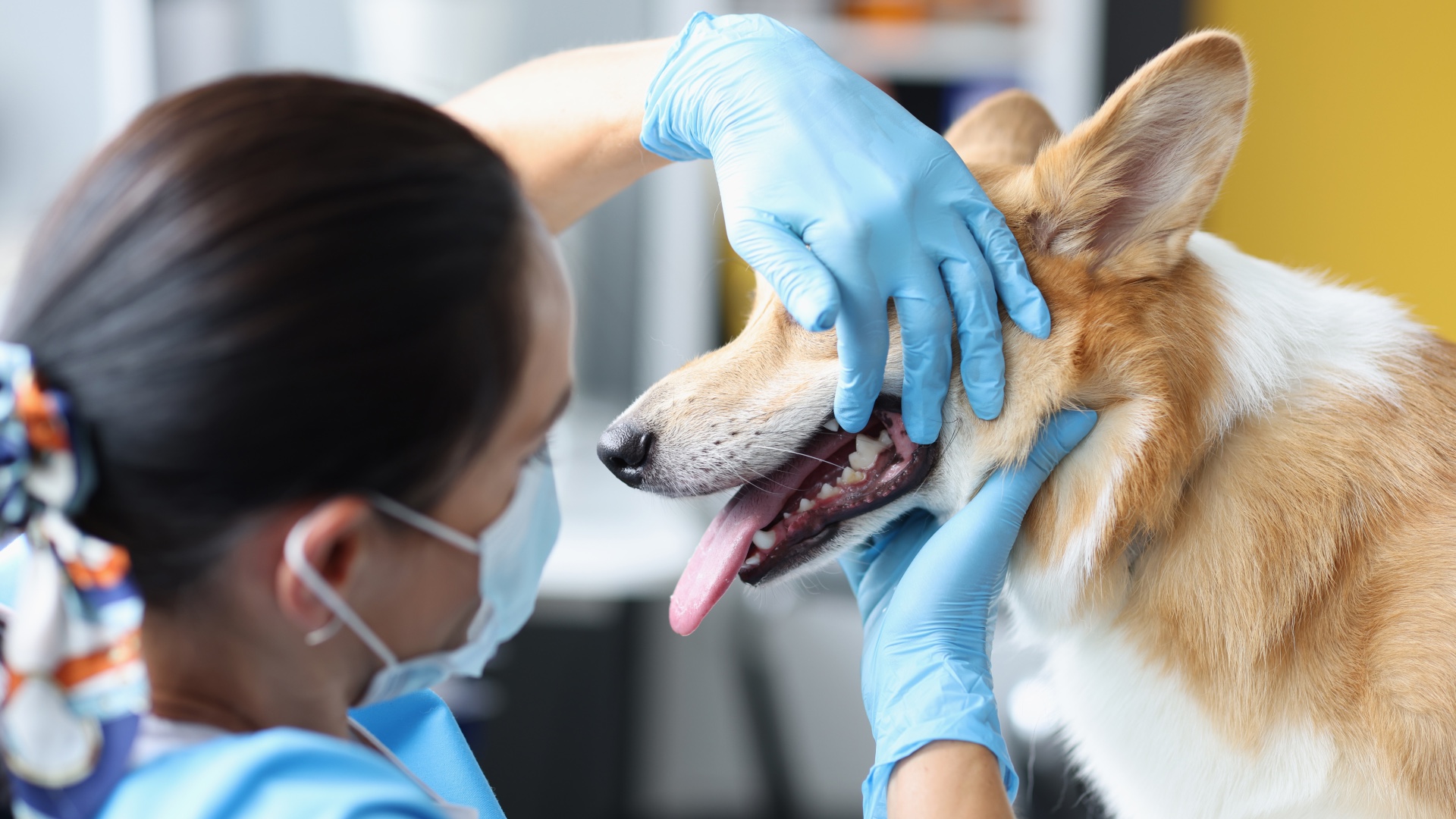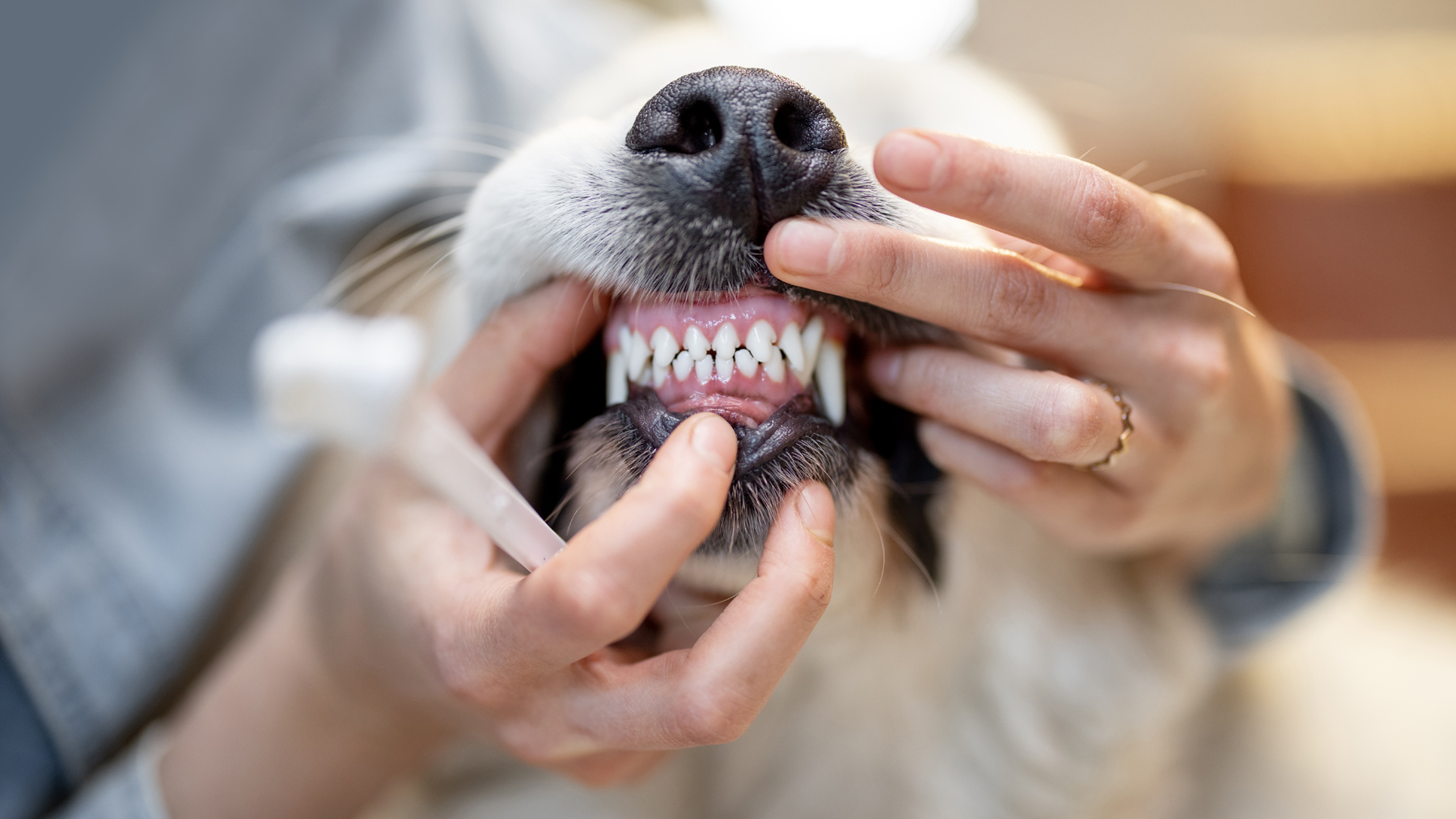Do dog teeth fall out? Vet reveals if adult dogs lose teeth or not
Do dog teeth fall out? Dr Joanna Woodnutt reveals everything you need to know about tooth loss in adult dogs

Do dog teeth fall out when our pups get older? If you have a canine companion in your family it’s a question you may be asking. While it’s not normal for adult dogs to lose their teeth, it can happen and sometimes this can be a cause for concern.
In an ideal world, dogs shouldn’t experience tooth loss once they get out of the puppy teething phase. Things like the longest lasting dog chews and regular brushing of their teeth with a special doggy toothpaste can help keep on top of mouth hygiene.
However, perhaps you already know how to brush a dog’s teeth and yet in spite of your best efforts, you’ve noticed a few of your pup’s toothy pegs are missing even though they’ve not recently been injured.
If that’s the case, you’ll find the guidance below from expert vet Dr. Joanna Woodnutt to be super helpful. She explains what causes adult tooth loss in dogs, how to treat gum disease, and some simple things you can do to prevent dental issues in your dog. Let’s take a look….
Is it normal for adult dogs to lose teeth?
Woodnutt says that dogs should only lose their teeth once in their life, “When their puppy teeth fall out and their adult teeth come in,” she notes. This typically happens when a dog hits the six-month milestone.
But once the puppy teething phase is over and a dog reaches one year old, Woodnutt reveals that it’s not normal for them to lose teeth and is a sign of an underlying problem.
Virbac CET VeggieDent Fr3sh Dental Chews for Medium Dogs
Z-shape helps dogs to manage the dental chew and really gets in all those hard-to-reach areas. This vegetarian dental chew helps to freshen breath and reduce plaque.
What causes tooth loss in adult dogs?
According to Woodnutt, “The most common cause of tooth loss in adult dogs is periodontitis. This is when bacteria in the mouth damages the gums and then the ligaments that hold the teeth to the jaw bone”, she says, “Not only is this painful, but with the ligaments damaged, the teeth become wobbly and fall out.”
The severity of a dog’s gum health will vary and Woodnutt explains that gum disease and periodontitis are technically different. “Gum disease usually refers to gingivitis, which is the (reversible) precursor to periodontitis,” she adds, “Gingivitis means inflammation of the gums”. This is why people often refer to it as gum disease.
Get the best advice, tips and top tech for your beloved Pets
Other ways that a fully grown dog could lose a tooth is through injury, for example, if they knock their mouth or head causing a tooth to become loose and potentially fall out. Or if they suffered any trauma or a significantly poor diet when they were young, the enamel on their teeth could be poor and make them more at risk of plaque buildup and tooth decay.

How to tell if your dog has gum disease
“Dogs with gum disease have sore red gums, especially along the line where the gums meet the teeth,” notes Woodnutt. This isn’t always easy to spot, especially if your dog isn’t one to visibly display their teeth or doesn’t like you going near their mouth.
However, Woodnutt says that you might notice bleeding or blood on toys and chews and this could be a sign that your dog’s gums need to be checked out. She adds, “A bad-breath smell usually occurs too, and as tartar builds up on the teeth you’ll see a grey-green stain.”
How is gum disease treated for dogs?
Gum disease in dogs is reversible with treatment, but periodontitis isn’t, Woodnutt tells us. But detecting gum disease as early on as possible and treating your dog’s gum disease can prevent tooth loss.
“Daily tooth brushing with the best tooth brush for dogs is ideal - this loosens the bacteria and prevents them from being able to get under the gums and do too much damage. If tartar has built up, a professional scale and polish and full mouth assessment under a general anesthetic is necessary,” says Woodnutt.
You might also want to invest in the best dog toothpaste, which is recommended over homemade dog toothpaste.
How to prevent dental issues in dogs
Looking for some tips to keep dog teeth clean and healthy? The advice offered for preventing canine dental issues is fairly similar to how we humans take care of our teeth and gums. Regular (daily) tooth brushing is the best form of prevention.
Woodnutt tells us that dogs can be trained to accept a toothbrush and flavored toothpaste, which means many dogs see it as a treat. Other forms of dental care at home that can assist in preventing dental issues are chews and water additives. But Woodnutt notes that these are best used alongside toothbrushing.
Virbac CET Enzymatic Toothpaste
Formulated using an exclusive dual-enzyme system, this toothpaste reduces plaque and freshens the breath. Because it contains no foaming agents, it's safe for your pet to swallow and it comes in a choice of five flavors.
You might also want to learn how to remove tartar build-up in dogs and about dog teeth rotting.

After graduating as a veterinarian from the University of Nottingham, Dr Joanna Woodnutt went on to practice companion animal medicine in the Midlands, UK. Dr Woodnutt is specifically interested in consulting and helping her clients understand their pets better, whether it’s around medical problems such as dermatology, behavior, and nutrition.

Jessica holds a journalism degree from Cardiff University and has authored articles for renowned publications, including PetsRadar, Fit&Well, LiveScience, Runner's World, The Evening Express, and Tom's Guide. Throughout her career in journalism she has forged connections with experts in the field, like behaviorists, trainers, and vets. Through her writing, Jessica aims to empower pet owners with accurate information to enhance their furry companions' lives.


